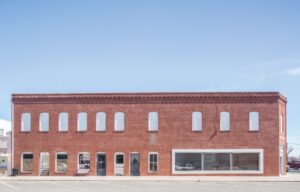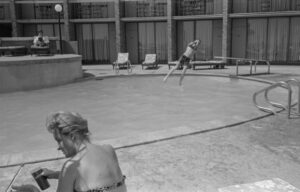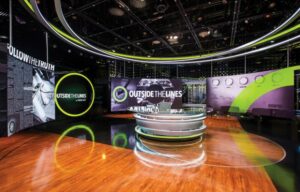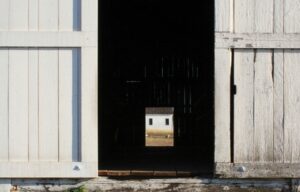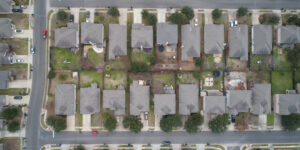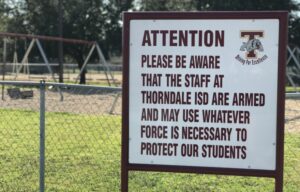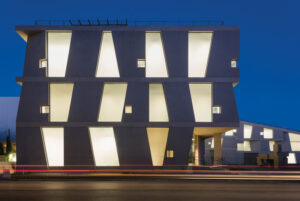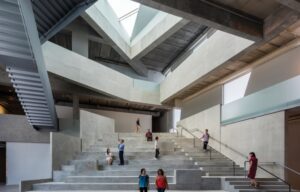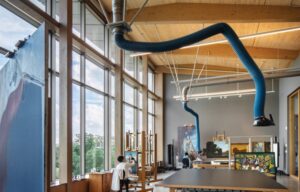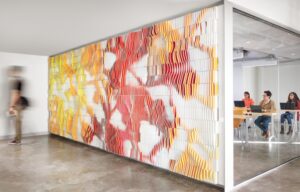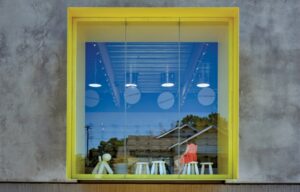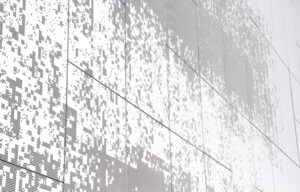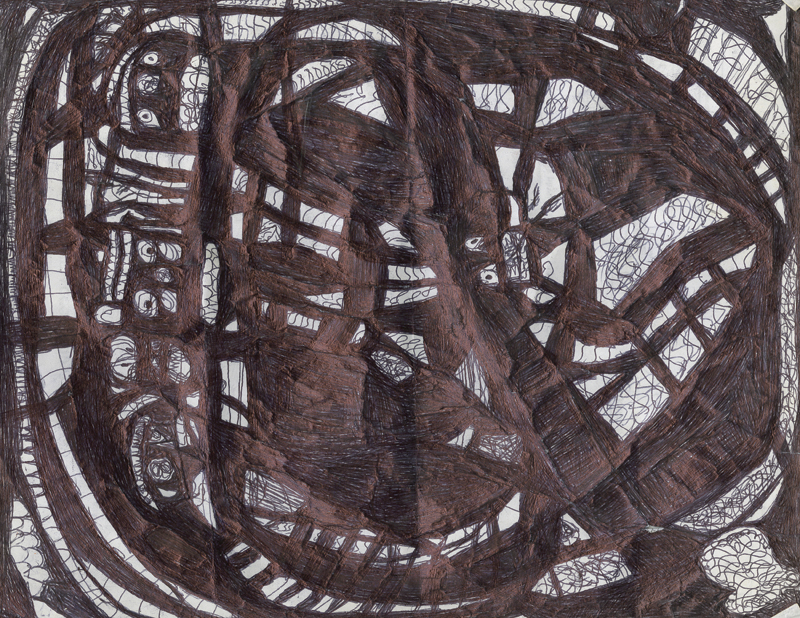
The Architecture of Torment
Located 50 miles northwest of Baton Rouge, the Louisiana State Penitentiary — or Angola, as it’s more commonly known — is the largest maximum-security prison in the United States, housing more than 5,000 prisoners and covering a vast expanse of 28 square miles. Often referred to as “the bloodiest prison in America,” Angola is a former slave plantation, named for the homeland of the slaves who once worked its fields, where racial tensions still run deep. Though now a penal institution, many of its characteristics remain uncomfortably consistent with slave plantation days. It is an isolated village, surrounded by water and swamp on three sides, and it is the only penitentiary in the country where staff members live on site.
Robert Hillary King first entered Angola state prison in 1960 — on an armed robbery conviction when he was 18 years old — and he was granted parole in 1965. After bouncing in and out of the criminal justice system on a series of robbery convictions, for which he has consistently maintained his innocence (though he admits to committing some nonviolent burglaries in his youth), King ultimately landed in Orleans Parish Prison, where he met several of the New Orleans 12, members of the Black Panther Party who had been arrested following a standoff with police at a housing project. It was there that he was indoctrinated into the Black Panthers. In 1972, King was brought to Angola for the third time as part of a roundup of black radicals following the death of a young prison guard, Brent Miller. He was immediately put into solitary confinement on the grounds that he “wanted to play lawyer for another inmate.”
Conditions in Angola were dire — “a lawless, dangerous hellhole,” as it has been described. Inmates, who were predominately black, labored for 16 hours a day in sugar cane fields for two cents per hour. The all-white corrections officers were called “freemen” and lived on the grounds with their families and inmate-servants called “house boys.” Incoming prisoners, known as “fresh fishes,” were sold as sex slaves.
It was in this volatile environment that King met fellow Black Panthers Herman Wallace and Albert Woodfox, who had also entered Angola the previous year on charges of armed robbery. Together they formed one of the only prison-based chapters of the Black Panther Party, to protest segregation within the prison and to end the rampant violence.
On the morning of April 17, 1972, Brent Miller, a 23-year-old corrections officer, was stabbed to death in a prison dormitory at Angola. About 200 prisoners — all black — were rounded up and interrogated. Two days later, four men identified as “black militants,” including Wallace and Woodfox, were accused of the murder. Although both had alibis and there was no physical evidence linking them to the crime, Wallace and Woodfox were found guilty of Miller’s murder, sentenced to life imprisonment without parole, and taken from the court straight to Angola’s Closed Cell Restricted (CCR) block. The following year, King was accused of murdering inmate August Kelly and was convicted at a trial where he was shackled and gagged with duct tape.

Another drawing by inmate Ernest Jerome DeFrance that was included in the ADSPR exhibition. The call for entries for the exhibition requested drawings of solitary confinement cells by prisoners held in solitary confinement cells.
For the duration of their time served in solitary, all three men maintained their innocence and continued to fight against civil rights injustices. Woodfox was quoted in an article by NPR: “That’s the one thing I didn’t give up. When I first started out, we knew that, if we were going to survive, we had to look for strength from the outside, from society. So instead of turning inward, becoming institutionalized, we decided that we would turn outward to society.”
A court reversed King’s conviction in 2001, and he was released. Wallace died in 2013, only days after a judge granted him a new trial and ordered him released. Woodfox was freed in 2016 after pleading “no contest” to lesser charges. Collectively, the men who had come to be known as the “Angola 3” served 114 years in solitary confinement; Woodfox, with a duration of nearly 44 years, is considered to have served the longest solitary confinement term in the history of the United States.
A typical solitary confinement cell is approximately six by eight feet, and prisoners are confined 22–24 hours per day, with opportunities for “recreation” one hour per day, five days per week, taken alone in an outdoor cage or indoor area. The rooms are furnished with a metal toilet, sink, bed, and platform. Daylight is limited or nonexistent, and fluorescent lights are left on throughout the night. While solitary contains some violent offenders, a significant portion of its inmates are placed in segregation for nonviolent or minor infractions — such as for having a pamphlet written in Swahili — or as protective custody inmates, whose population includes the mentally ill, developmentally disabled, juveniles sentenced as adults, former gang members, high-profile inmates, the sexually vulnerable, gender nonconformists, and others who might be victimized in the general population.

A drawing published with the permission of inmate Kenny “Zulu” Whitmore
For decades, psychologists and psychiatrists have argued that extended bouts of solitary are detrimental to the mind, and organizations like Amnesty International and the United Nations have condemned the practice as torture. In one study, Stuart Grassian, a board-certified psychiatrist and former faculty member of Harvard Medical School, found that roughly one third of solitary inmates were “actively psychotic and/or acutely suicidal,” as reported in 2014 by PBS’s FRONTLINE. They exhibit “a specific psychiatric syndrome, characterized by hallucinations; panic attacks; overt paranoia; diminished impulse control; hypersensitivity to external stimuli; and difficulties with thinking, concentration and memory. Some inmates lose the ability to maintain a state of alertness, while others develop crippling obsessions.” Gruesome accounts of self-mutilation, auto-cannibalism, and suicide abound; in fact, more than half of the successful suicides in the prison system occur within the estimated seven percent of the population in “special housing status,” which includes solitary or psychiatric seclusion cells.
While many states are beginning to ban long-term solitary confinement, it hasn’t been entirely prohibited (and often it takes on a new name, such as “administrative segregation,” though practices remain essentially unchanged). One reason for this is that, historically, psychological distress hasn’t been considered cruel and unusual punishment in U.S. jurisprudence. To be considered “cruel and unusual,” physical harm — or brain damage — must be demonstrated, which is where neuroscience is beginning to influence the discourse.
Huda Akil, a neuroscientist and co-director of the University of Michigan’s Molecular & Behavioral Neuroscience Institute, first met Robert King in 2014 at the annual meeting of the American Academy for the Advancement of Science. When asked about the physical changes that had occurred during his extended period of isolation, King reported that the first thing he noticed was that his distance vision began to deteriorate. He now also gets lost easily. The diminished ability to find one’s bearings is indicative of prolonged depression — a common effect of isolation — which can cause the brain’s hippocampus to shrink. This area of the brain is also responsible for orientation and navigation through space. His continued symptoms 18 years after release suggest permanent, or at least long-lasting, damage to these areas of the brain. In fact, studies have shown that brain function begins to slow after only a few days in isolation.
Lack of regular exposure to daylight and darkness also leads to a host of physical side effects. Satchin Panda, a professor in the Regulatory Biology Laboratory at the Salk Institute for Biological Studies, researches mammalian circadian rhythms. His research indicates that just a few nights of sleep loss can lead to effects such as irritability, mood swings, and compromised learning. When circadian disruption continues for extended periods of time, it can result in significant hormonal dysregulation, ultimately leading to conditions such as anxiety, ADHD, systemic inflammation, glucose intolerance, mania, cardiac arrhythmia, heart disease, and cancer, among others.

A drawing published with the permission of inmates Aron D. Castlin and Ricky D. Matthews.
The brain is equally critical for social interactions, including short- and long-term bonding. Considering that 95 percent of those held in solitary will eventually return to their communities, extended periods of isolation have dire implications in terms of recidivism. Craig Haney, a social psychologist and professor at UC Santa Cruz, has spent more than 30 years researching institutional environments, particularly the psychological effects of incarceration. In an interview, Haney reported: “I’ve had prisoners tell me that the first time they’ve been given an opportunity to interact with other people, they can’t do it. … They don’t come out of their cell. … Obviously this social atrophy, the anxiety which surrounds social interaction, can be extremely disabling and problematic for people who are released from solitary confinement, either released back into the larger prison community, or even more poignantly, released from solitary confinement into the larger society.”
The AIA Academy of Architecture for Justice was established in 1967 (though under another name). Initially, it focused on courtroom facilities and later on corrections facilities. The Research and Technology subcommittee was reinstituted in 2005. That same year, the organization established a relationship with the Academy of Neuroscience for Architecture, looking at the overlap between correctional facilities and neuroscience. Some of their priority research topics include lighting (hypothesized to improve sleep patterns, leading to decreased aggression and irritability); improved acoustics (hypothesized to decrease stress); lighting, color, and nature within intake areas (hypothesized to decrease stress of inmates and staff); size of space, crowding, and density (also hypothesized to decrease stress); pro-social inmate-staff interaction (hypothesized to reduce inmate disorder); and video testimony (hypothesized to decrease empathy when compared with live testimony).
Conducting research on the effects of solitary confinement is challenging, however, because of the difficulty of getting access for studies, assuring voluntary consent for participation, finding control or comparison groups, and comparing conditions across sites. It is even difficult to conduct analogous laboratory experiments on animals, because it is considered unethical to hold rats in isolation for the extended periods of time that prisoners are held.
The use of solitary confinement in the United States has its origins in the late 18th century with the Quaker-led Pennsylvania Prison Society, which endorsed solitary confinement as a means of monastic reflection that would lead to moral reformation, an attempt to create a more humane criminal justice system. However, in 1890 the U.S. Supreme Court recognized both the dangers and failures of solitary confinement as a correctional practice, stating that “a considerable number of the prisoners fell, after even a short confinement, into a semi-fatuous condition, from which it was next to impossible to rouse them, and others became violently insane; others still, committed suicide; while those who stood the ordeal better were not generally reformed, and in most cases did not recover sufficient mental activity to be of any subsequent service to the community.” The practice was largely abandoned by the early 20th century because of the irreparable damage to prisoners that resulted.
However, the 1980s saw a sudden increase in the use of solitary confinement. The prison population exploded to six or seven times that of the previous decade, resulting in overcrowding and the dismantling of rehabilitation programs. The massive increase in the prison population was largely due to the war on drugs and to “tough on crime” policies, as well as to efforts to deinstitutionalize the mentally ill. Thus began the era of the “supermax” — prisons dedicated to isolation cells. In 1984, there was only one supermax facility in the United States. By 1999, there were 60.
Today, the U.S. is the world’s largest jailer, with 2.3 million people incarcerated and 80,000 people in solitary confinement at a cost of $80 billion annually. Notably, 64 percent of the current prison population has a diagnosed mental illness (which does not account for others who may not yet have been diagnosed), and 75 percent suffer from substance abuse problems. As MASS Design Group and the Vera Institute of Justice write in their report “Reimagining Prison,” “If the goal of the prison was to make our communities safer and rehabilitate those who have offended, its legacy in America is one of failure.” Our criminal justice system tends to leave people worse off than before, resulting in an expensive, destructive cycle for which we all pay. Luckily, there are some exceptions. The Las Colinas Detention and Reentry Facility in San Diego uses design strategies founded upon environmental and behavioral psychology to affect mental and physical well-being. Designed by two California-based firms, KMD and HMC Architects, the project looks more like a higher education campus than a detention facility, and its goal is to create a healing environment to prevent further psychological deterioration in inmates.
The challenges we face in our criminal justice system are highly complex, but it is imperative that they be addressed. Not only do we need to create more humane environments to hold our prison population — with the ultimate intention of rehabilitation and reintegration wherever possible — we also need to address contributing factors, such as lack of access to adequate mental health care, that have forced our prisons to serve populations that they were never designed to serve. It is both a spatial and social issue, and architects are an integral part of the solution.
A special thanks to Melissa M. Farling, FAIA, member of the AIA Academy of Architecture for Justice, and principal at Gould Evans, Leadership Group, for her extensive insight into the topic.
Anastasia Calhoun, Assoc. AIA, works at Overland Partners in San Antonio.

Anastasia Calhoun, Assoc. AIA, NOMA, is the editor of Texas Architect.
Also from this issue

